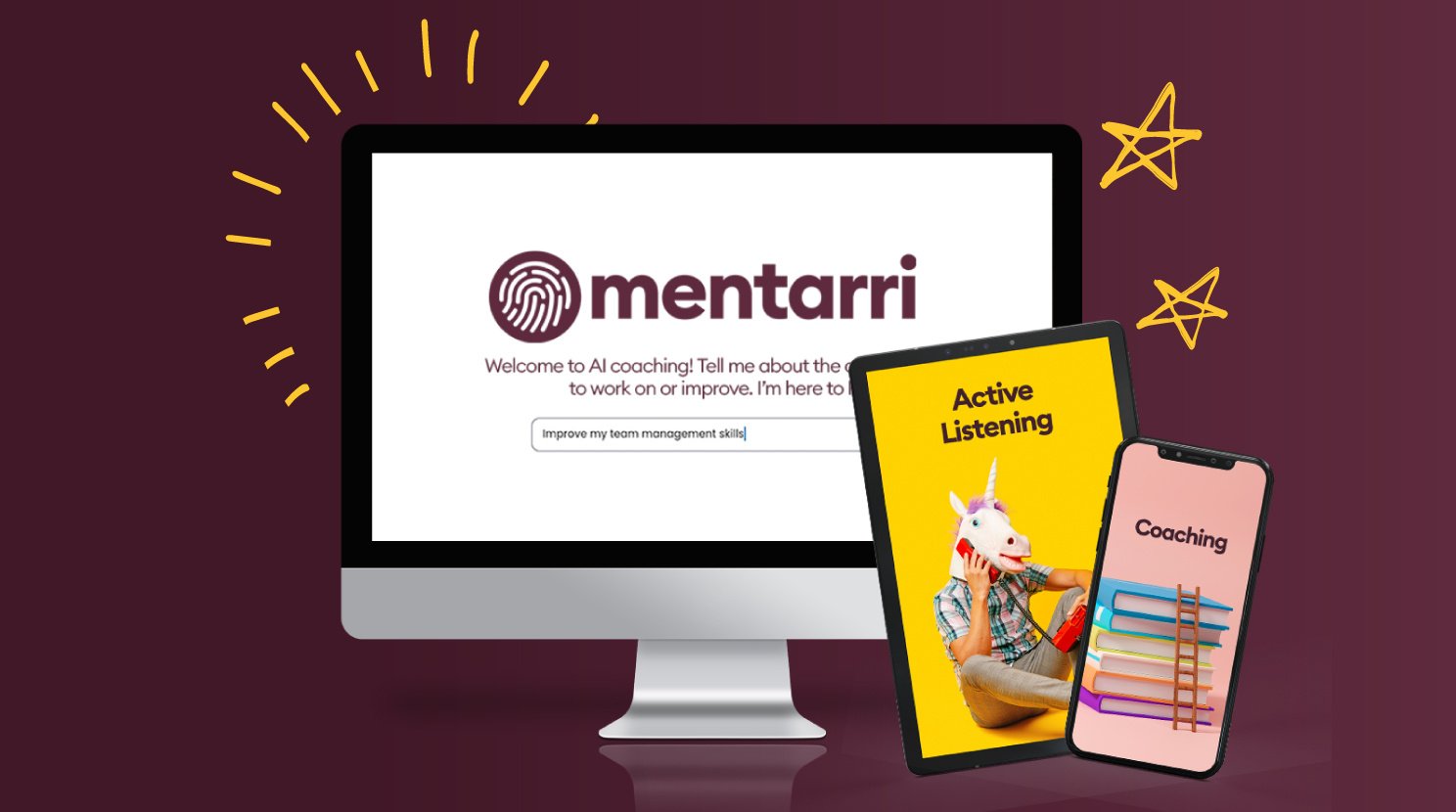Finding leaders who can drive success and innovation is an ongoing challenge. External hires may offer specific skills and experience, but developing leadership from within the organisation has proven to be a highly effective strategy.
HR professionals can create a talent pipeline using a range of strategies including identifying and nurturing high-potential employees, succession planning, leadership development programs and establishing a strong culture of performance management and feedback.
However, learning programmes are one of the most powerful strategies to use when developing a pool of potential leaders. These programmes provide targeted development opportunities to nurture and enhance the skills, knowledge, and capabilities of high-potential employees, preparing them to take on leadership roles. In addition, one of HR’s key stakeholders, those in C-suite, wants to provide opportunities for internal mobility.
So how can you use learning programmes to build a talent pipeline?
Harnesses the potential of existing talent
Savvy HR professionals are already identifying high-potential employees and providing them with the necessary tools, training, and experiences to prepare them for leadership roles. Research from the Chartered Institute of Personnel and Development (CiPD) shows that a third of HR leaders currently use internal mobility to fill their talent gaps.
Nurturing a talent pipeline enables organisations to ensure a seamless transition of leadership positions and reduce the need for external hires and associated costs, eliminating the risk of leadership gaps and succession planning challenges. By identifying and developing leaders internally, organisations can save significant costs associated with external executive search firms and onboarding expenses.
Skill sets for jobs have changed by around 25% since 2015. By 2027, this number is expected to double. In this rapidly changing business landscape, having a pipeline of talent with the skills needed to advance their careers, while meeting the future needs of the organisation, is vital. Learning is central to future-proofing organisations.
Increase employee engagement and retention
93% of organisations are concerned about employee retention. Just 9% of employees feel enthused by their work, according to Gallup.
Organisations need to shift from focusing on extrinsic motivators – such as salary and bonuses – to intrinsic ones, such as creativity and self-motivation.
In his book Drive, bestselling author Daniel Pink lays out the three key components of intrinsic motivation:
- Autonomy - the need to direct your own life and work
- Mastery - the desire to grow and improve
- Purpose - connecting personal goals to organisational targets
Learning plays a key role in this new era of employee motivation. When employees perceive organisations investing in their growth and development, they become more committed to their work. In fact, “Providing learning opportunities” is the main strategy organisations are using to improve employee engagement and retention.
In addition, learning initiatives enable employees to see a clear career progression path, which increases job satisfaction, and employee loyalty and reduces the likelihood of talented individuals seeking opportunities elsewhere. This leads to higher retention rates and reduces the costs associated with turnover and recruitment.
Increase cost-effectiveness
Hiring leaders externally can be expensive due to recruitment fees, onboarding costs, and potential salary negotiations. On the other hand, developing leaders from within the organisation allows for cost savings, as the organisation can leverage existing resources and infrastructure.
Promoting an internal candidate typically costs much less, as the company already has a relationship with the candidate and does not need to spend time and money on recruiting. In addition, the internal candidate is already familiar with the company's culture, processes, and systems, so they can hit the ground running and contribute more quickly.
By investing in learning programmes organisations can develop existing employees essential leadership competencies, such as communication, decision-making, strategic thinking, and emotional intelligence, enabling them to become more effective and confident leaders. Taking an internal development approach saves the organisation from the expense of hiring external candidates for leadership positions.
Boost diversity, equality, inclusion and belonging initiatives
By fostering a culture of learning that embraces diversity, organisations can cultivate leadership talent from various backgrounds and perspectives.
Organisations can bridge the gaps in representation and create a more diverse leadership pipeline by providing equal access to learning and development opportunities. This approach promotes fairness and equality while enhancing innovation and problem-solving capabilities by incorporating diverse viewpoints and experiences.
Selecting an L&D provider who understands and addresses systemic barriers that may hinder the progression of individuals from underrepresented groups, will support leaders to identify and challenge these barriers. As a result, leaders can contribute to a culture of equal opportunity.
Impact business goals
Organisations can customise their learning programs to align with their specific goals, values, and strategies, ensuring that leaders have the skills needed to drive the organisation forward. It is no surprise that 82% of global leaders agree that the HR function is more critical now than it has ever been. Organisational success depends on having the right people with the right skills, in the right positions, at the right time.
Learning programmes offer the flexibility to meet the specific needs of an organisation. They can encompass a variety of methods, such as workshops, coaching, mentoring, job rotations, and executive education, ensuring that employees receive a well-rounded and comprehensive learning experience.
Create organisational resilience
Today, the skills employees need to keep doing their current jobs are changing all the time, while movement within an organisation is no longer just vertical, but also horizontal, diagonal and even in and out. It’s no longer enough to train people for the next rung on the corporate ladder.
For entrepreneur and CEO Margaret Heffernan, the old model of forecasting, planning, and executing is no longer effective in an unpredictable world. Technology has accelerated change and offers opportunities for further transformation, including using artificial intelligence to automate and reshape processes.
By investing in continuous learning opportunities, organisations enable employees to adapt to evolving market trends, technologies, and customer demands. Leaders who have grown within the company are more likely to understand and embody its core values, mission, and vision. This enables organisations to become agile when facing uncertain times.
Increase cultural continuity
Leaders who have grown within the company are more likely to understand and embody its core values, mission, and vision. Promoting an internal candidate means that the organisation does not lose any productivity, as the employee is already familiar with the role and the company. In addition, studies show that the level of congruence between an organisation’s culture and its new employees' value preferences is a predictor of turnover.
How to use your learning and development strategy to build a leadership pipeline
Using an L&D strategy to build a leadership pipeline involves identifying and developing individuals with the potential to assume leadership roles in the future. Leverage your L&D strategy to build a strong leadership pipeline by:
- Identifying high-potential employees: Look for employees who demonstrate exceptional performance, strong interpersonal skills, a growth mindset, and a desire to take on additional responsibilities.
- Designing targeted leadership development programs: Develop leadership development programs specifically tailored to the needs of potential leaders.
- Offering continuous learning and growth opportunities: Ensure that your L&D strategy provides ongoing learning and growth opportunities for potential leaders. Talk to us about how we can help.
- Creating a culture of learning: Encourage employees to seek new challenges, acquire new skills, and share knowledge with others.
- Providing opportunities for hands-on leadership experience: Offer opportunities for potential leaders to gain hands-on experience in leadership roles.
- Evaluating and monitoring progress: Regularly assess the progress and growth of potential leaders within the leadership pipeline. Track their progress against predefined leadership competencies and adjust development plans as needed.








